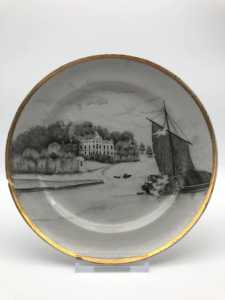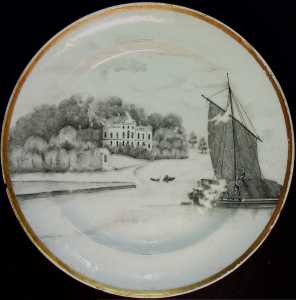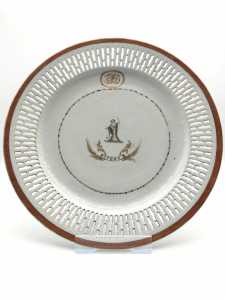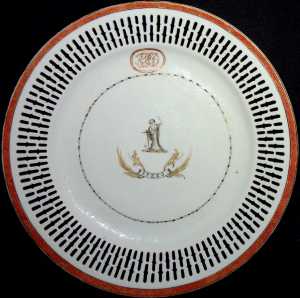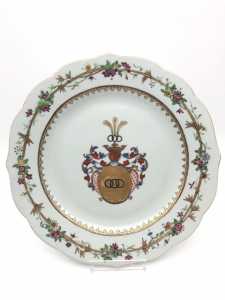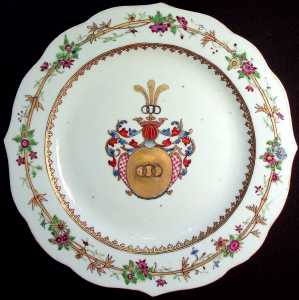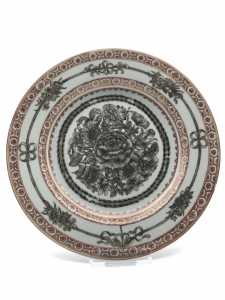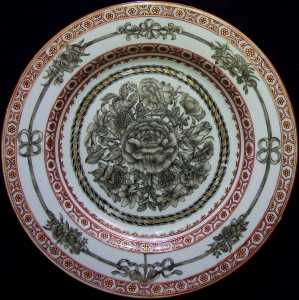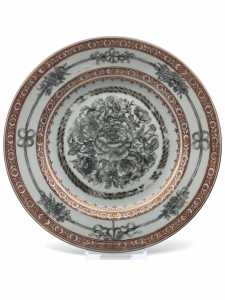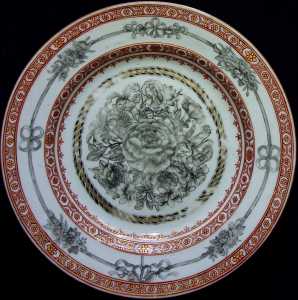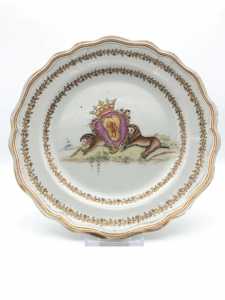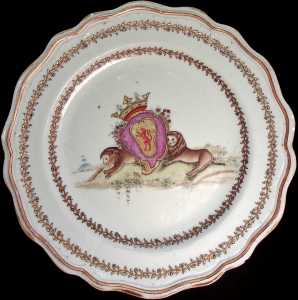The Chinese and Asian Art Forum. For Fans, Collectors and Dealers.
 Basic Rules For the BidAmount Asian Art Forum: Talk about whatever you want. You can even discuss and offer things that are for sale if they are authentic. Maximum image file size per post is 2 MB. Images of 700pxl x 700pxl are optimal if saved at a medium resolution. Be respectful of others and enjoy yourself. Click the YouTube link for a brief tutorial on using the forum. You can also EMBED Videos by cutting and pasting from You-Tube, Vimeo etc.
Basic Rules For the BidAmount Asian Art Forum: Talk about whatever you want. You can even discuss and offer things that are for sale if they are authentic. Maximum image file size per post is 2 MB. Images of 700pxl x 700pxl are optimal if saved at a medium resolution. Be respectful of others and enjoy yourself. Click the YouTube link for a brief tutorial on using the forum. You can also EMBED Videos by cutting and pasting from You-Tube, Vimeo etc.
NOTE: To post an item or add a new post, click open the category title from the FORUM LIST, and CLICK the Blue ADD TOPIC button.
Hi all,
I'm trying a new technique for taking photos of my plates and wanted to hear which y'all prefer. I'd love to hear y'alls opinions. I've been having a lot of trouble finding a method for taking these photos that I'm satisfied with, and I've gotten conflicting opinions between the two. The white background is using my lightbox, and the black background is a book scanner. Saying neither is also a valid opinion 🤣 If anyone has any tips too, that'd be much appreciated.
I think white background with no shadows.
Thanks Brian! Getting no shadows is a pretty tough feat with my current setup, but I'll try to see if I can do that. Maybe I can find a white mat for the bookscanner.
I like the dark background on lighter pieces. I think google images might discriminate against them though.
The dark background seems to bring out the color and vitality to the details, making them more attractive. Are you using the same lights?
The dark background brings out the details very nicely.
I am liking the book scanner. But are the colors really that vivid? Will the buyer complain?
I like the dark background though the white looks more professional (museum, auction house) The most important is to get the colors and the white of the porcelain right. I use a spyder cube which is a small gadget related to a grey card.
Birgit
I am not sure. I think the black does highlight the colours well, as would any coloured background that picks out a dominant colour in the decoration, but as others have said, that can lead to disappointment if these are for selling rather than display as it can make the piece look more vivid than it will first appear when unboxed on a kitchen table.
I think for selling white is probably safest and I think I prefer the shadows. 😊 Or lead with a shot of a coloured background but include white ones?
I have just sold some cloisonné and took many of the photos outside as indoors didn't do justice to the colours, but as that is what buyers will be living with, I explained that reasoning. It hasn't arrived yet, so even having been cautious, I am concerned it won't look as good as the outside pictures.
Thank you, everyone! It seems the majority is in the black background, so I'll see how I can incorporate your comments moving forward. The lighting is different for each method since it's all built-in, but I just bought some cheap studio lights from Amazon that might help.
You all brought up a good question that I never considered - which one is more representative of the plates' true colors? After staring at the plates closer and comparing, neither are! The colors in the white background are washed out/paler, but the black background photos are more vivid than in reality. I think the reds especially are coming across very strong with the book scanner, which I didn't notice. It looks like the grisaille pieces do really well with the bookscanner, but maybe I should stick to the lightbox for the other plates.
Luckily I've abandoned the idea of trying to become a Chinese export porcelain dealer since I like them too much, so these photos are just for my reference as I work on cataloguing my small collection. No angry buyers to be worried about 😀
I really want the photos to be uniform, so I might have to check out that spyder cube for the lighting adjustment. I'd never heard of that one - thank you, Birgit!
John,
First at all you are comparing pictures of different size, and that counts a lot.
Besides that, you are comparing two different source lights, without saying if you adjusted the white balance of the camera accordingly. Most probably not, because the white of the two types of pictures doesn’t look the same.
The problem is much simpler than what it may appear. For taking good pictures, the most important thing is the one that, I can’t never understand why, is the less cared of by the great majority of people: the White Balance.
It is so simply, so logic, so basic, but for some reason it is not taken into account by almost all people.
In fatc, it is often heard that a picture is taken indoor, and the other picture in the Sun light, etc, which, from the point of view of color rendition, is a non-sense. A picture taken in shadow is perfectly comparable with a picture taken under Sun light, if the white balance has been properly set (matter of a few seconds).
What changes, is the distribution of the light. In shadow, the light is becoming from several directions, while in Sun light, the great part of the light is coming from a single point (the Sun). That has a great impact on the details of the image. Under Sun, the image is sharper, just because of the type of light source. Exactly the same happens in taking pictures with the white box or with direct lamps. Diffused against direct light, the same as above.
So, at this point, two important things: select the type of light in order if you need a softer or sharper image, and set the White Balance on the camera.
Now, the difference between white or black background. This is influencing the sharpness of the image; with black background, the details of the object are sharper. I suppose that this happens because the quantity of white surrounding the object is causing light reflections between the surfaces of the lenses of the objective, resulting in an optical interference that is “veiling” the image. Hence, images with a black background have a better contrast.
There is a further point: the auto exposure. This is good in general, but if we are willing to take several pictures of, suppose, dishes, then I strongly recommend to set the camera to the Manual mode. With auto mode, the exposure changes if the decoration of the object is of light tones or of darker tones. It means that the camera is setting the parameters to yield an image of average, uniform light density, which is far from the real. Once the camera is in Manual mode and the proper Aperture/Shutter speed couple is selected, all the images must be taken with the same parameters. That way, the black is black and the white is white, instead of being light or dark greys, regardless the nature of the object. Very important. Of course, with the camera and the lights at the same distance. If you change the distance, then you must change the aperture or the shutter speed, because distance has a strong influence on the illumination level (lighting level changes at the square rate. Doubling the distance, the illumination drops to ¼).
In conclusion, if you have to take a series of pictures like those shown above by you, decide the type of illumination, decide the type of background, set the White Balance, set the proper exposure in manual mode, and take all the pictures at once, without changings.
Regards,
Giovanni
I wish I could program the white balance in my Canon EOS Rebel SL1. I check the manual for it and it shows me a menu option that I don't see on my screen so it's very frustrating. I need to consult with a Canon expert to see what the glitch is.
That said, the manual said the white balance is done automatically and to only change it if I notice inaccuracies.
I don't think I understand what the book scanner situation is. Is it like a photocopier where you lay the place down on glass? That can't be it. It's not one of those hand-held wands. I'll go look this up. 😜
ETA: OK, it's a contraption with a base and an arm with a camera, correct?
Thanks for visiting "The BidAmount Asian Art Forum | Chinese Art"
If you sell on eBay, or have a shop feel free to post images and descriptions and links.
Check back often for discussion about the latest news in the Chinese art and antique world. Also find out about the latest Asian art auctions at Sotheby's, Christie's, Bonhams and Tajans.
Auction results for: fine porcelain, ceramics, bronze, jade, textiles and scholar's objects. As well as Japanese, Thai, Vietnamese and other Asian cultures.
Thank you,
Peter Combs
Topics and categories on The BidAmount Asian Art Forum | Chinese Art
Kangxi vases, Kangxi dishes and chargers, Kangxi ritual pieces, Kangxi scholar's objects, Qianlong famille rose, Qianlong enamels, Qianlong period paintings, Qianlong Emporer's court, Fine porcelain of the Yongzheng period. Chinese imperial art, Ming porcelain including Jiajing, Wanli, Xuande, Chenghua as well as Ming jades and bronzes.
The BidAmount Asian Art Forum | Chinese Art
A free Asian art discussion board and Asian art message board for dealers and collectors of art and antiques from China, Japan, Korea, Thailand, Cambodia, Vietnam and the rest of Asia. Linked to all of the BidAmount Asian art reference areas, with videos from plcombs Asian Art and Bidamount on YouTube. Sign up also for the weekly BidAmount newsletter and catalogs of active eBay listing of Chinese porcelain, bronze, jades, robes, and paintings.
The art of calligraphy - and for the ancient Chinese it certainly was an art - aimed to demonstrate superior control and skill using brush and ink. Calligraphy established itself as one of the major Chinese art forms during the Han dynasty (206 BCE - 220 CE), and for two millennia after, all educated men were expected to be proficient at it.
The Museum’s collections of Asian art span nearly five millennia and encompass the cultures of China, the Himalayas, India, Japan, Korea, and Southeast Asia. In 2007, the Museum launched an initiative to create dedicated galleries for the collection, beginning with a gallery for the arts of Korea ...
Chinese art is full of symbolism, in that artists typically seek to depict some aspect of a totality of which they are intuitively aware.
China Online Museum is the finest online museum of Chinese art. It features Chinese calligraphy, painting, ceramics, bronzes, carving, and other artworks.
Chinese Ceramics & Works of Art. Overview Upcoming auctions Contacts Auction results ... Christie’s sales of Chinese ceramics and works of art showcase centuries of Chinese history. Held throughout the year in London, New York, Paris and Hong Kong, they attract a wide audience of collectors and connoisseurs vying for pieces as diverse as ...
Explore Asian Art Week. Contact the Specialist Department. Chinese Paintings ... Senior Specialist, Head of Sale. [email protected]. Tel:+1 212 641 5760. Bid in-person or online for the upcoming auction:Fine Chinese Paintings on 10 September 2019 at New York. Bid in-person or online for the upcoming auction:Fine Chinese Paintings on 10 ...
Discover an abundance of must-see art from all corners of a vast continent at Christie’s NY Asian Art Week. From contemporary classical and Chinese paintings to works with exemplary provenance from the Art Institute of Chicago, our Rockefeller Paza galleries will be full of ancient treasures and contemporary masterworks in a salute to the vibrant arts of Asia.
Sold to benefit The Art Institute of Chicago’s Asian Art Acquisition Fund, the sale features 84 lots with a focus on Ming and Qing porcelains, and offers a rare insight into the taste for collecting Chinese ceramics and works of art in the Midwest from the end of the 19th century through the 1980s. Highlights include two Wanli wucai garlic-head vases, a Qianlong mark and period, blue and ...
Specialist, Chinese Paintings, Christie's London Dr Malcolm McNeill is a Specialist in Chinese Paintings at Christie’s, based in London. He previously worked as an assistant curator of the Chinese collections and the Victoria and Albert Museum in London, as a researcher at the British Museum, and as a translator and tour guide at the National Palace Museum in Taipei.
The Christie's Education 2020 Conference: The Chinese Art Market 18 Jun 2019 Christie’s Education is delighted to announce our first international academic conference in Asia which will take place in Hong Kong from 26-27 November 2020 at the Hong Kong Convention and Exhibition Centre and will run in parallel with Christie’s Hong Kong Autumn Auctions.
The summer Chinese Art sale in Hong Kong will feature works of art from several private collections, including Qing porcelains and textile from the collection of the legendary Chinese art dealer A. W. Bahr (1877–1959), fine gilt bronze Buddhist sculptures from an old Hong Kong collection, an East Asian collection of Qing dynasty wine cups and jades, and a Japanese collection of Song ceramics ...
Sotheby's Chinese Works of Art Department holds two auctions each year in London, New York, Hong Kong and Paris.
Chinese Art - View Auction details, bid, buy and collect the various artworks at Sothebys Art Auction House.
With more than 340 Chinese works of art dating from the Neolithic to the Republic periods, highlights of this sale include a selection of Qing Imperial monochromes from the collection of Arnold and Blema Steinberg, early ceramics from the Art Institute of Chicago and Chinese porcelain and works of art from the collection of Henry Arnhold.
Results: Sotheby's Asia Week achieved $52.4 million in six strong auctions, exceeding pre-sale estimates. With 76.5% of lots sold and 60.3% of lots surpassing high estimates, the Asian art sales at Sotheby's indicate continued collector interest in the finest works of art from China, India and and the Himalayas.
Today's sale of Important Chinese Art will proceed as planned with sessions at 10 AM and 2 PM EDT. Sotheby's will be monitoring the weather conditions throughout the day and will be available to coordinate alternative bidding options should conditions make it difficult for clients to attend the auction in person.
Bonhams Chinese Art department is renowned for offering the finest works of art representing the richness and breadth of China's artistic heritage, particularly Imperial porcelain, white and spinach green jades, cloisonné and Buddhist art. Specialised international auctions are held globally, including London, Hong Kong and San Francisco.
Bonhams : Chinese Works of Art We use cookies to remember choices you make on functionality and personal features to enhance your experience to our site. By continuing to use our site you consent to the use of cookies. Please refer to our privacy and cookie policies for more information.
Bonhams Fine Art Auctioneers & Valuers: auctioneers of art, pictures, collectables and motor cars. We use cookies to remember choices you make on functionality and personal features to enhance your experience to our site. By continuing to use our site you consent to the use of cookies. ... Chinese Art (US) General enquiries
Bonhams : Fine Chinese Art We use cookies to remember choices you make on functionality and personal features to enhance your experience to our site. By continuing to use our site you consent to the use of cookies. Please refer to our privacy and cookie policies for more information.
Bonhams Fine Art Auctioneers & Valuers: auctioneers of art, pictures, collectables and motor cars Bonhams : Asian Art We use cookies to remember choices you make on functionality and personal features to enhance your experience to our site.
Bonhams are international auctioneers of fine Chinese and Japanese art. We specialise in rare Imperial and Export Chinese ceramics and works of art, as well as Japanese ceramics, fine and decorative works of art from the Neolithic Period to the 20th century. View on map
Bonhams Fine Art Auctioneers & Valuers: auctioneers of art, pictures, collectables and motor cars. We use cookies to remember choices you make on functionality and personal features to enhance your experience to our site. By continuing to use our site you consent to the use of cookies. ... Asian Art Bonhams. Work. 22 Queen St.
